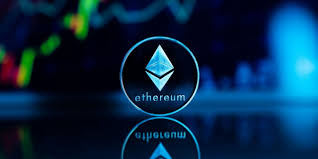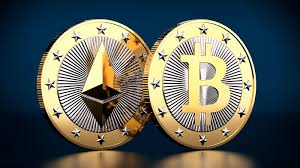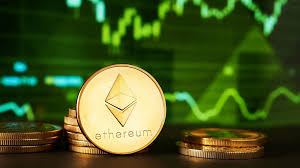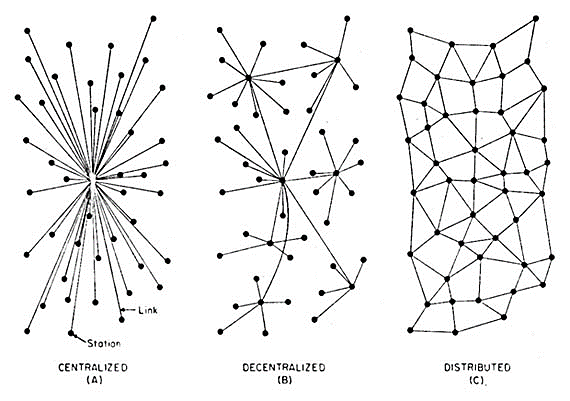Introduction To Ethereum: Exploring The World Of Decentralized Computing
 Kehinde Sodiq
Kehinde Sodiq
What is a blockchain?
“Block” refers to data and state being stored in consecutive groups known as “blocks”. If you send ETH to someone else, the transaction data needs to be added to a block to be successful.
“Chain” refers to the fact that each block cryptographically references its parent. In other words, blocks get chained together. The data in a block cannot change without changing all subsequent blocks, which would require the consensus of the entire network.
It’s very rare that a single technology rises to challenge incumbents in dozens of industries, but that’s exactly what the new technology of Blockchain is busy doing. Spawning such billion-dollar projects as Bitcoin, Ethereum, as well as thousands of other cryptocurrencies. Blockchain promises to reshape the way we think about money.
With new processes like Initial Coin Offerings (ICOs), blockchain is changing the way startups raise money, and making it possible for ordinary people to invest in what was once only available to Venture Capitalists.
Blockchain is a distributed ledger that;
can contain financial and/or non-financial transactions
is distributed across a number of systems over a peer-to-peer network
uses cryptography and digital signatures to prove identity, authenticity and enforce read/write access rights
has mechanisms to make it hard to change historical records, or at least make it easy to detect when someone is trying to change it
What is Ethereum?
Ethereum is a blockchain with a computer embedded in it. It is the foundation for building apps and organizations in a decentralized, permissionless, censorship-resistant way.
Ethereum is a network of computers all over the world that follow a set of rules called the Ethereum protocol. The Ethereum network acts as the foundation for communities, applications, organizations and digital assets that anyone can build and use.
Ethereum is a deterministic but practically unbounded state machine, consisting of globally accessible singleton states and a virtual machine that applies changes to that state.
They are Layer 1 and Layer 2 built-in.
You can create an Ethereum account from anywhere, at any time, and explore a world of apps or build your own. The core innovation is that you can do all this without trusting a central authority that could change the rules or restrict your access.
Ethereum language is a Turing complete, i.e Ethereum can straightforwardly function as a general purpose computer.
What is the difference between Ethereum and Bitcoin?
Launched in 2015, Ethereum builds on Bitcoin’s innovation, with some big differences.Both let you use digital money without payment providers or banks. But Ethereum is programmable, so you can also build and deploy decentralized applications on its network.
Bitcoin enables us to send basic messages to one another about what we think is valuable. Establishing value without authority is already powerful. Ethereum extends this: rather than just messages, you can write any general program, or contract. There is no limit to the kind of contracts which can be created and agreed upon, hence great innovation happens on the Ethereum network. While Bitcoin is only a payment network, Ethereum is more like a marketplace of financial services, games, social networks and other apps.

Dig. 1 : showing Ethereum and Bitcoin
What can Ethereum do?
- Banking for everyone
Not everyone has access to financial services. An internet connection is all you need to access Ethereum and the lending, borrowing and savings products built on it.
- An open internet
Anyone can interact with the Ethereum network or build applications on it. This allows you to control your own assets and identity, instead of them being controlled by a few mega-corporations.
- A peer-to-peer network
Ethereum allows you to coordinate, make agreements or transfer digital assets directly with other people. You don’t need to rely on intermediaries.
- Censorship-resistant
No government or company has control over Ethereum. Decentralization makes it nearly impossible for anyone to stop you from receiving payments or using services on Ethereum.
- Commerce guarantees
Customers have a secure, built-in guarantee that funds will only change hands if you provide what was agreed. Likewise, developers can have certainty that the rules won’t change on them.
- Composable products
All apps are built on the same blockchain with a shared global state, meaning they can build off each other (like Lego bricks). This allows for better products and experiences and assurances that no-one can remove any tools apps rely upon.
Why Learning Ethereum?
Learning Ethereum can be incredibly valuable, especially in the context of modern blockchain development. Here are some compelling reasons for learning Ethereum;
Pioneer of Smart Contracts
Ethereum revolutionized blockchain by introducing smart contracts, which are self-executing contracts with terms directly written into code. Learning Ethereum equips developers to create decentralized applications (DApps) that can operate without intermediaries, automating complex processes and reducing costs.
Interoperability & Flexibility
Ethereum is the most widely adopted platform for developing decentralized applications, and its ERC standards (e.g., ERC-20, ERC-721) make tokens created on Ethereum highly interoperable across platforms. Learning Ethereum means understanding these standards, giving developers the ability to build flexible applications that interact with other systems.
- Constant Innovation (Ethereum 2.0)
Ethereum is continuously evolving with upgrades like Ethereum 2.0, which focuses on improving scalability, security, and energy efficiency. Learning Ethereum positions you to stay relevant in the blockchain space, as it will be a leading platform for the foreseeable future.
- Pioneer of Smart Contracts
Ethereum revolutionized blockchain by introducing smart contracts, which are self-executing contracts with terms directly written into code. Learning Ethereum equips developers to create decentralized applications (DApps) that can operate without intermediaries, automating complex processes and reducing costs.
- Large Developer Community & Rich Ecosystem
Ethereum has one of the largest and most active developer communities, which means there are abundant learning resources, forums, libraries, and tools to help new learners. The ecosystem includes powerful frameworks like Truffle, Hardhat, and Web3.js, which simplify development, testing, and deployment of smart contracts.
- Empowering Privacy & Security
Ethereum’s decentralized nature makes it highly secure. Unlike centralized platforms, where data can be compromised, Ethereum’s blockchain ensures data integrity and protection against censorship. Learning Ethereum helps developers build secure, transparent applications that users can trust.
Who runs Ethereum?
Ethereum is not controlled by any particular entity. It exists whenever there are connected computers running software following the Ethereum protocol and adding to the Ethereum blockchain. Each of these computers is known as a node. Nodes can be run by anyone, although to participate in securing the network you have to stake ETH (Ethereum’s native token). Anyone with 32 ETH can do this without needing permission.Even the Ethereum source code is not produced by a single entity. Anyone can suggest changes to the protocol and discuss upgrades. There are several implementations of the Ethereum protocol that are produced by independent organizations in several programming languages, and they are usually built in the open and encourage community contributions.
Here’s a closer look at who runs Ethereum;
- Ethereum Foundation
The Ethereum Foundation is a non-profit organization that plays a crucial role in supporting the development of Ethereum. Founded in 2014 by Vitalik Buterin and others, the Foundation funds research and development projects, coordinates community initiatives, and helps maintain the network’s integrity.
- Developers
Ethereum is an open-source platform, which means that developers from around the world contribute to its codebase. There are core developers who maintain the Ethereum protocol and implement upgrades, while other developers build decentralized applications (dApps) on the platform. Notable figures in the development community include:
Vitalik Buterin: Co-founder and visionary behind Ethereum.
Joseph Lubin: Co-founder of Ethereum and founder of ConsenSys, a blockchain software company.
Pieter Wuille: A key developer who has contributed to various improvements in Ethereum.
Node Operators
Ethereum operates on a peer-to-peer network where node operators maintain the blockchain. These nodes validate transactions, store copies of the blockchain, and ensure the network’s security. Anyone can run a node, contributing to the decentralization of the network.
- Miners and Validators
Before Ethereum’s transition to a proof-of-stake (PoS) consensus mechanism through the Ethereum 2.0 upgrade, miners played a vital role in securing the network by solving complex mathematical problems to validate transactions and add them to the blockchain.
With the switch to PoS, validators now replace miners. Validators are chosen to create new blocks based on the amount of Ether they hold and are willing to “stake” as collateral. This change aims to make the network more energy-efficient and secure.
Dig 2 : Diagram rep. ETH Miners
- Community
The Ethereum community consists of users, developers, investors, and enthusiasts who participate in discussions, contribute to projects, and help guide the direction of the platform. Community input is essential for governance decisions and protocol upgrades, often organized through Ethereum Improvement Proposals (EIPs).
- Decentralized Autonomous Organizations (DAOs)
DAOs have emerged within the Ethereum ecosystem to facilitate decentralized governance. These organizations operate through smart contracts and allow stakeholders to vote on proposals that influence development and funding decisions. Examples include MakerDAO and Compound, which govern their respective protocols.
Meet ether, the Ethereum’s Cryptocurrency
Ether (ETH) is the native cryptocurrency of the Ethereum blockchain.
To perform tasks on the Ethereum network, computations must be carried out by its built-in computer, the Ethereum Virtual Machine (EVM). These computations come at a cost, paid using Ethereum’s native cryptocurrency, Ether (ETH). Therefore, you need at least a small amount of Ether to interact with the network.
Ether is entirely digital and can be sent instantly to anyone, anywhere in the world. Its supply is not controlled by any government or corporation; it is decentralized and fully transparent. Ether is issued in a controlled way by the protocol, rewarding only stakers who help secure the network.

Dig 3 : Diagram rep. Ether
It serves several key purposes within the Ethereum ecosystem:
Transaction Fees (Gas Fees): Ether is used to pay for computational services on the Ethereum network. Whenever users interact with smart contracts, transfer tokens, or perform any transaction, they pay a “gas fee” in ETH. These fees compensate miners (or validators in Ethereum 2.0) for securing the network and processing transactions.
Staking (Ethereum 2.0): In Ethereum’s shift to a Proof of Stake (PoS) consensus mechanism, Ether plays a role in staking. Validators lock up a certain amount of ETH to secure the network and, in return, earn rewards in Ether.
Smart Contract Execution: Many decentralized applications (dApps) on Ethereum rely on Ether to execute smart contracts, which power decentralized finance (DeFi), NFTs, and other blockchain-based services.
While Ethereum refers to the blockchain and network, Ether (ETH) is the actual cryptocurrency used within that ecosystem.
Conclusion
Ethereum is much more than a blockchain — it’s a decentralized global network enabling the development of innovative, censorship-resistant applications and organizations. By combining programmable smart contracts with a decentralized infrastructure, Ethereum allows users to participate in a world of decentralized finance, gaming, social networks, and much more — all without relying on centralized authorities.
Whether you’re a developer interested in building decentralized applications or someone eager to explore the world of cryptocurrencies, Ethereum offers a vibrant ecosystem that is continuously evolving. Its pioneering role in blockchain technology makes it an essential platform for anyone looking to stay at the forefront of innovation in the digital economy.
References: Aliu Musa : KwaraBuild-presentation
Ethereum in Numbers : Ethereum Book
Ethereum Foundation : The Role of Ethereum Foundation
Ethereum and Smart Contracts : A beginner’s Guide
Ethereum’s Official Website : Ethereum’s Official Website
Subscribe to my newsletter
Read articles from Kehinde Sodiq directly inside your inbox. Subscribe to the newsletter, and don't miss out.
Written by

Kehinde Sodiq
Kehinde Sodiq
Software Developer | | Blockchain Developer | | Web3 Technical Writer | | DLTAfrica | | Coding enthusiast | | Lifelong learner

